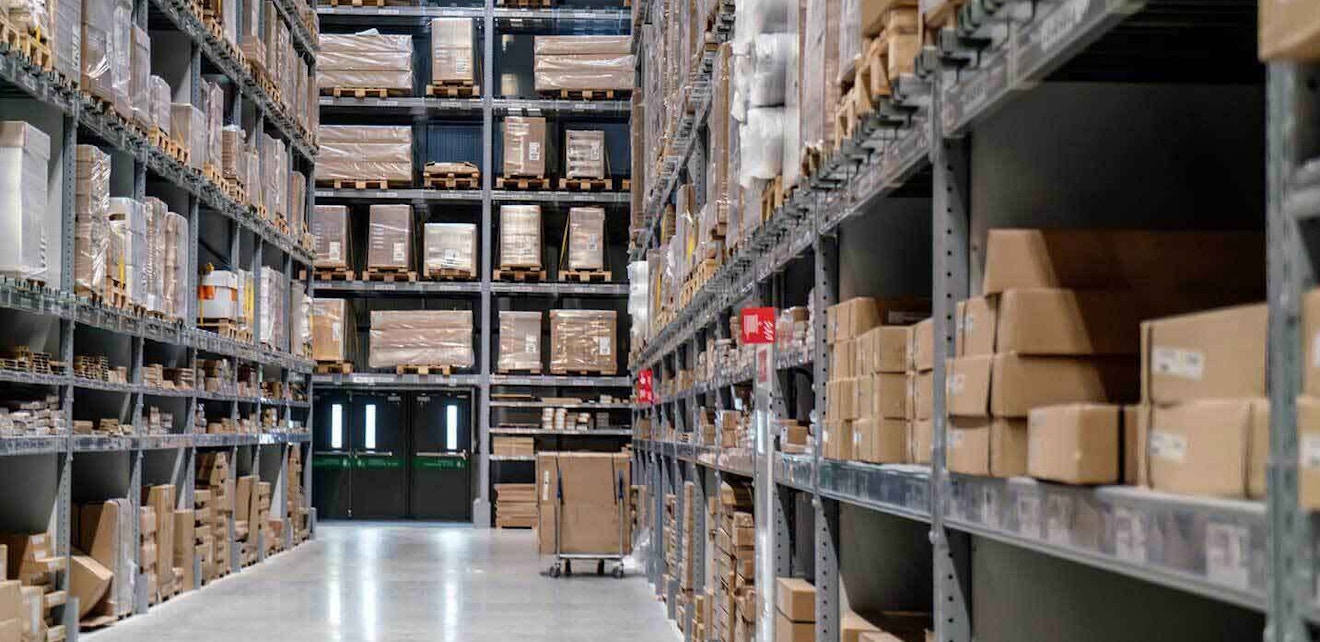Home > Blog
Read Time — 4 minutes
What are the different types of inventory systems?

Juggling a supply chain is one of the trickiest, but most important, aspects of managing a manufacturing business. Keeping that supply chain healthy and working at its optimum means the business can perform to its best ability on a day-to-day basis.
In order to do that, businesses need to have a strong handle on their inventory systems. Because the amount of materials and products a business has on site changes rapidly, keeping an accurate balance is difficult — whatever the sector. A typical retail business’s inventory, for example, is only accurate for around 63% of the time.
There are different types of inventory, and which will suit a particular business depends largely on the industry in which it operates and its size.
The two main variants of the inventory system are periodic and perpetual. So what are the differences between these systems?
Periodic inventory system
A periodic system is called as such because its data is updated at certain predetermined intervals, often every quarter, six months or 12 months.
It relies on staff manually counting up the items in stock — either by eye or by scanning barcodes. These figures are then compared to those from the last period from which a count was taken, thereby revealing how much has been added to or taken away from the inventory during that period.
Because this method alone only shows the net changes in an inventory over a certain period of time, the running total is then added to, or subtracted from, each time an item is added or consumed. So, theoretically, the periodic inventory counts should confirm this running total is correct.
Perpetual inventory system
A perpetual system is a much more technologically advanced method, reliant on the implementation of a centralised software system.
No overall inventory counts are conducted. Instead, items coming into or leaving the system — whether they are bought, borrowed, used or discarded — are scanned by the centralised system, using either barcodes or RFID tags. This updates the inventory automatically and in real-time.
This means that the inventory data should always be accurate, providing that everything is scanned promptly. The more accurate data also enables business managers to make more informed decisions, thanks to having a wider scope of information about their operations.
Which is better for whom?
Each type of inventory system is suited to different businesses and purposes.
Because of the labour-intensive nature involved in manually counting each item, even if using barcode scanners, periodic inventory systems are only really practical for small businesses and those that don’t deal with a large number of items moving through them.
However, the ease of such a system’s implementation, thanks to its simple nature, little or no need for investment and minimal use of technology, means that it is ideal for businesses that only hold a small amount of stock. Fully automating a small inventory would be a futile thing to do.
Perpetual inventory systems are much more suited to large-scale applications, where businesses might have hundreds of thousands of items going through their warehouses each day.
The fact that the data is updated in real-time means that businesses that use items quickly and need to regularly know the health of their inventories can rely on a perpetual system’s figures much more confidently. For manufacturers using a JIT model, or similar, this is crucial.
Be sure to know the system thoroughly
That’s not to say that a perpetual inventory system doesn’t have its own challenges. One of the biggest tasks is training the workforce in using it.
Each person should know, for example, how to accurately scan an item’s barcode or register its RFID tag each time it enters the facility, is consumed or thrown away. After all, with a fully automated system, any human error can throw off the data’s accuracy and therefore its usefulness.
Likewise, supervisors and managers need to know how to use the systemwell if they are to reap the full benefits of their investment in it.
It’s for this reason that the supplier of the inventory management system should offer to train the team and make sure they know how to explore its potential, such as we do with the ECI M1 system.
Consider the best fit
The boundaries between a business that would benefit most from a periodic inventory system and a fully automated perpetual one like ECI M1 can be blurred, and so a business should be careful to evaluate what is right for itself.
With several types of systems available, we’re happy to discuss the options available with a business working out what’s best for its operations.



